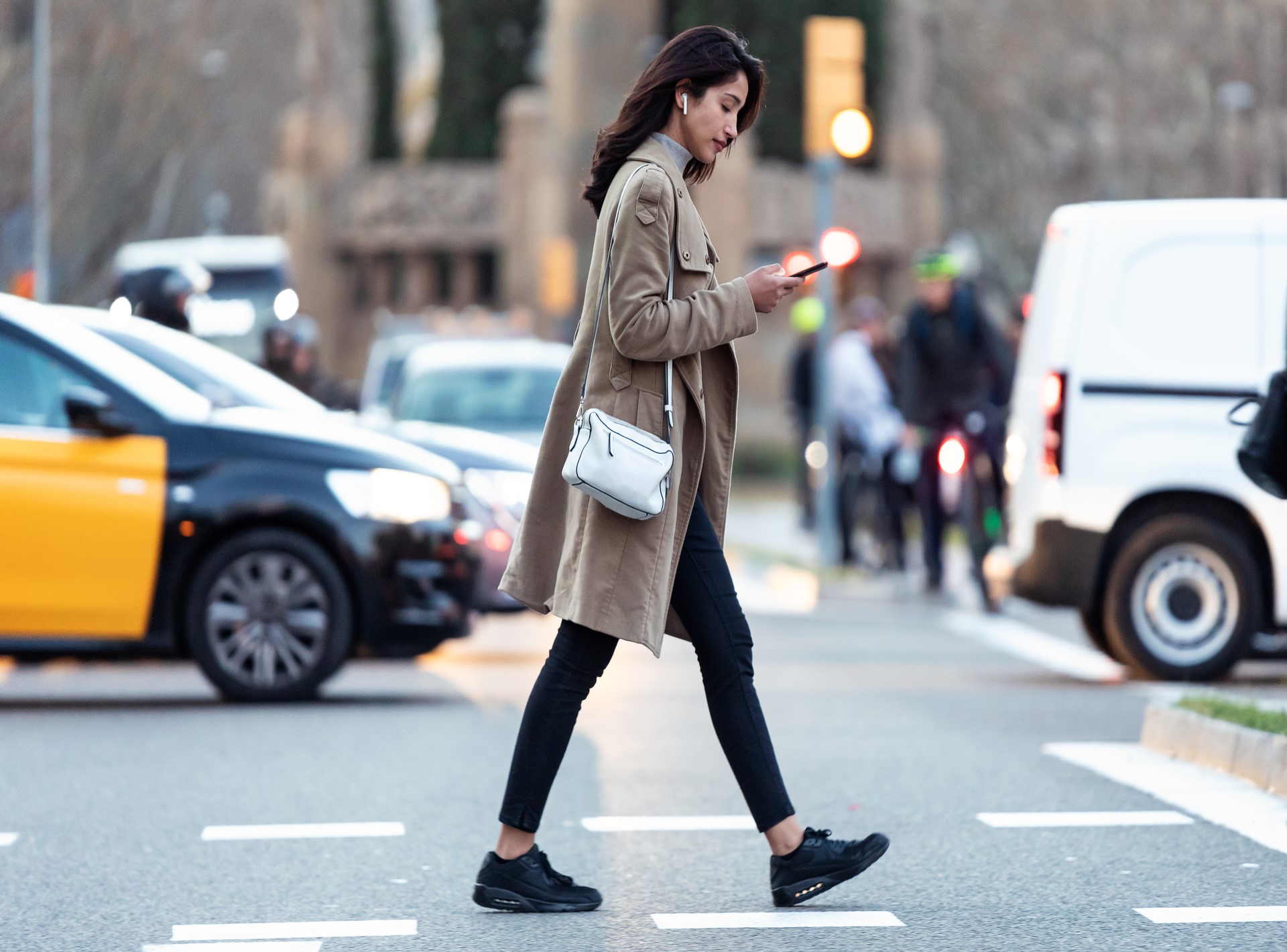Always answering texts on the go? Well, Aussie researchers say you’re more likely to take a tumble.
A team of researchers from the University of New South Wales tested 50 students on their ability to text while walking, revealing that when they encountered a slipping hazard, they were more likely to hit the floor, even when walking more cautiously.
When it comes to university-aged adults who are glued to their smartphones, experts argue over whether texting while walking increases the risk of an accident. Some studies have shown that texting pedestrians are more likely to walk into oncoming traffic, while other studies suggest that young adults have mastered the art of multitasking and are able to text accurately while navigating obstacles.
However, few studies have measured how texters respond to unpredictable hazard conditions. By simulating an environment with random slipping threats, the study, published 8 August in Heliyon, found that texting increased the risk of falling in response to walkway hazards.
Senior author Dr Matthew Brodie, a neuroscientist and engineer at the UNSW Graduate School of Biomedical Engineering explained that the ‘internet-of-things’ has resulted in people using their mobile devices to access emails, text and perform other tasks just about anywhere.
“It’s become common to see pedestrians using their mobile devices and, on any day, it seems as many as 80% of people, both younger and older, may be head down and texting while walking,” he said.
“Consequently, the individual’s attention may be divided between locomotor and typing tasks and I wondered: is this safe?… I wanted to know if these dangers are real or imagined and to measure the risk in a repeatable way.”
Dr Brodie and his co-author, Yoshiro Okubo, invented a tiled hazard walkway at Neuroscience Research Australia’s gait laboratory, which had a tile that could be adjusted to slide out of place halfway through, so that anyone who stepped on it would slip.
Some 50 UNSW undergraduate students were recruited for the experiment, equipped with a safety harness—to prevent any slip from becoming a fall—and sensors that collected their motion data as they walked, either without texting or while typing ‘the quick brown fox jumps over the lazy dog.’
To better simulate the uncertainty of real life, students were only told that they may or may not slip, enabling the researchers to study how texting pedestrians may anticipate and try to prevent a potential slip, such as by leaning forward.
“What surprised me was how differently people responded to the threat of slipping,” Dr Brodie said.
“Some slowed down and took a more cautious approach, while others sped up in anticipation of slipping. Such different approaches reinforced how no two people are the same, and to better prevent accidents from texting while walking, multiple strategies may be needed.”
Despite motion data showing that texting participants tried to be more cautious in response to a threat, this did not counteract their risk of falling.
When participants went from leaning forwards (such as over a phone) to slipping backwards, their motion sensors showed an increase in the range of their ‘trunk angle,’ with the average trunk angle during a fall significantly increased if that student was texting, impacting postural balance.
Mobile phone use also negatively impacted gait stability as demonstrated by increased step time variability and decreased harmonic ratios, and the team found that texting while walking had a significant negative impact on all gait measures.
“This included slower gait speeds and the head being held in a flexed position to view the device screen while walking,” the authors said.
Walking also caused the texters’ accuracy to decrease. The highest texting accuracy occurred when students were seated, but accuracy decreased even when participants were cautioned about a potential slip that did not occur.


